We use it to heat, cool, light, and power
our homes, schools, and offices.


We use it to heat, cool, light, and power
our homes, schools, and offices.
We use it to heat, cool, light, and power our homes, schools, and offices.
We use energy to move around in our daily lives, whether by bus, car, or electric scooter, and to transport everyday goods such as food, clothing, and furniture.
Energy is essential in every industry and sector across our province—from retail, transportation, and manufacturing to construction, agriculture, and forestry. We get this energy from a mix of sources like refined petroleum products (RPPs), natural gas, electricity, and other fuels.

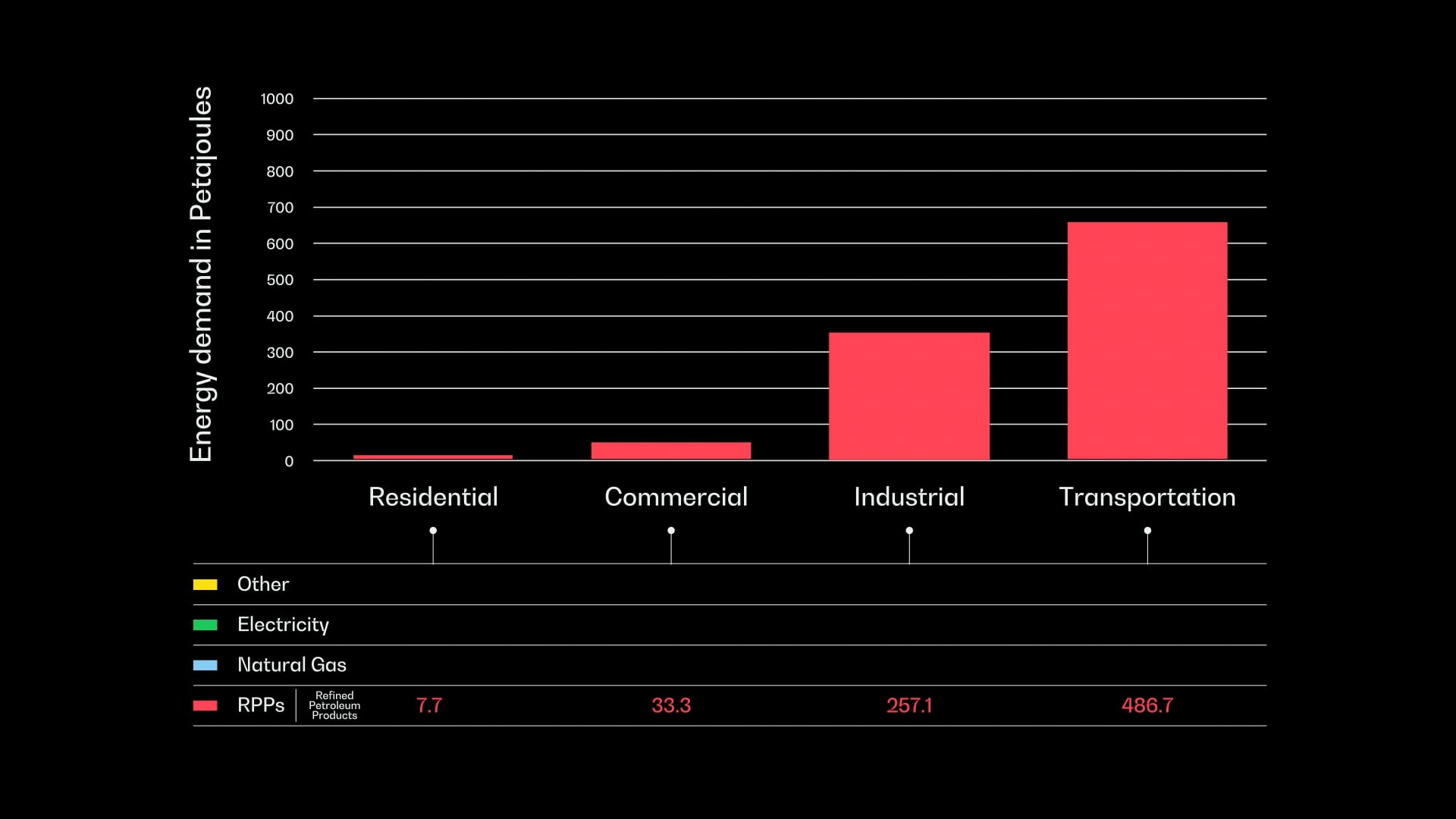
In 2022, end-use demand (the amount of energy directly consumed by the end user) in Ontario was 2,915 petajoules (PJ). A petajoule, abbreviated as PJ, is a unit of measurement of energy consumption. One petajoule is equal to one million billion joules. The industrial sector had the greatest energy demand, making up 35% of the total, followed by transportation at 29%. Residential and commercial sector demand was nearly equal at about 18% each.
RPPs (diesel, gasoline, oil, kerosene, etc.) were the largest fuel type consumed in Ontario in 2022, accounting for 43% of the total end-use demand. Natural gas and electricity accounted for about 30% and 18%, respectively. Other fuels like coal and biofuels filled the rest of the demand, mainly in the industrial and transportation sectors.
However, Ontario’s energy needs are changing. A growing population, transforming economy, climate change, and industrial and technological developments have all set the stage for an energy transformation—a shift to clean, low-emitting energy sources.
This transformation is already happening in Ontario. By adding new low-carbon generation to our electricity grid—like wind, nuclear, and hydro, by expanding pumped hydro and battery storage capacity, and by electrifying the economy, we are moving towards a clean energy future.


You’ve just turned the TV on to stream your favourite show after grabbing a snack from the fridge.
Thanks to the electricity powering your TV and fridge, you are entertained and fed.
But how exactly does the electricity get to your home to keep your appliances and electronics running?
Electricity is the secondary energy source that we get from the conversion of primary energy sources such as nuclear, moving water, sunlight, wind, or natural gas into electrical energy. This electrical energy can then be delivered to your home through the grid.
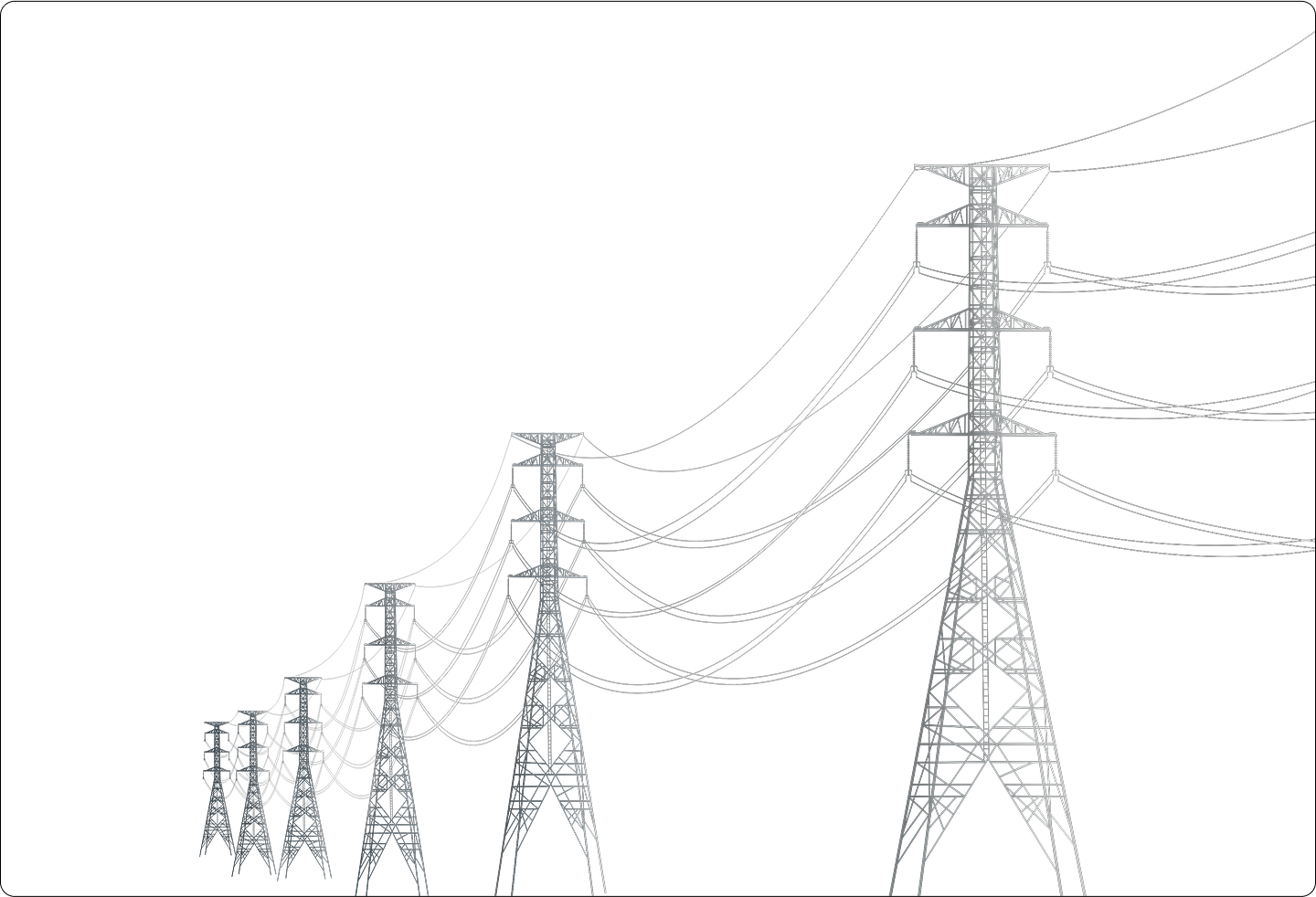
The entire interconnected system of generating, storing, transmitting, transforming, and distributing electricity across Ontario is known as the grid.
It is a constantly growing and evolving system. To understand the grid, it’s helpful to break it down into its most basic and important elements:

Think of power generation as the product (the electricity) you’re purchasing, transmission as the shipping company moving the product across Ontario, storage as the warehouse for the excess product, and distribution as the retailer bringing the product to you.
Provincial administrative and regulatory bodies like the Independent Electricity System Operator (IESO) and the Ontario Energy Board (OEB) intersect with all levels of the grid (generation, transmission, distribution, and storage). They help to manage supply and demand and ensure a reliable and affordable system. The IESO is responsible for keeping the lights on (reliability) while the OEB keeps costs in check (economic regulation).
Electricity has an important role to play in supporting a growing population and economy while helping mitigate the impacts of a changing climate. A clean, low-carbon grid like Ontario’s can help decarbonize the rest of the economy through electrification.
Ontario's energy transformation journey starts with a plan to create a more sustainable future powered by clean electricity.
By transforming the way we make, move, and use energy, we'll have the electricity we need while also slowing the impacts of climate change. By building and investing in clean electricity sources today, we will ensure that we build the clean economy of tomorrow for future generations.

To get where we want to go, we need to understand the challenges in front of us because a problem properly understood is a problem half solved.

POPULATION GROWTH
Across the globe, human populations are growing faster than ever before. At the same time, people are living longer, healthier lives.
In 1950, the world’s population was around 1.8 billion. Today, there are over 8 billion humans on Earth—more than three times as many people in less than 75 years. The United Nations projects that the world’s population will grow to around 10.3 billion people by 2080.

Canada’s population is also on the rise. In 2023, our population grew by 1,271,872 people. And in Ontario alone, the population is projected to grow to 21.7 million by 2046—just over 20 years from now. All these additional people will need to cool and power their homes, get to and from work and school, charge their devices, and live their lives without having to worry whether there’s enough power to do the things they need to do. We don’t just need more clean energy—we need a lot of it.
To support the transition to a clean energy economy, Ontario has invested in new battery manufacturing plants, electric vehicle (EV) production facilities, and other new industries in recent years. There has also been a significant growth in the agricultural sector, including increased lighting requirements for greenhouse food production. Combined with the electrification of steel manufacturing and mining processes, these developments represent a significant increase in energy demand from the industrial sector alone.


The technology sector is also driving increased energy demand.
In the United States and other parts of the world, we have already seen a rise in data centres that power in artificial intelligence (AI) and cryptocurrency—and we expect to see a similar rise in Canada in the coming years. AI applications, especially those that power language models such as chatbots or virtual assistants, require substantial computational power.
For example, the average ChatGPT query uses 10 times more energy than a single Google search. Data centres could demand 1,600 Megawatts (MW) of power in Ontario starting in 2038—that’s the equivalent of powering 1.6 million homes a year.
To decarbonize current energy sources and to meet the new energy demands from a rising population and growing economy, Ontario will have to increase its electricity generation capacity by a significant amount.

From the ocean depths and mountain peaks to the flowing rivers, towering trees, and vast array of wildlife that call the Earth home, everything on this planet is connected and depends on one another for survival.
The Indigenous Peoples, who have been living in harmony with the Earth since time immemorial, teach us we all have a responsibility as stewards of this land to care for and protect it for present and future generations. The truth is, we have not been doing a great job.
CLIMATE CHANGE: CAUSES AND IMPACTS
Climate change is happening—and it’s accelerating. The more the Earth warms, the more its climate, weather, and ecosystems become unbalanced. Severe weather including drought, wildfires, storms, floods, and extreme heat are all increasing in frequency and intensity around the world. Failed harvests, flooded homes, and the spread of invasive species are just some of the impacts felt in many communities in Ontario alone.
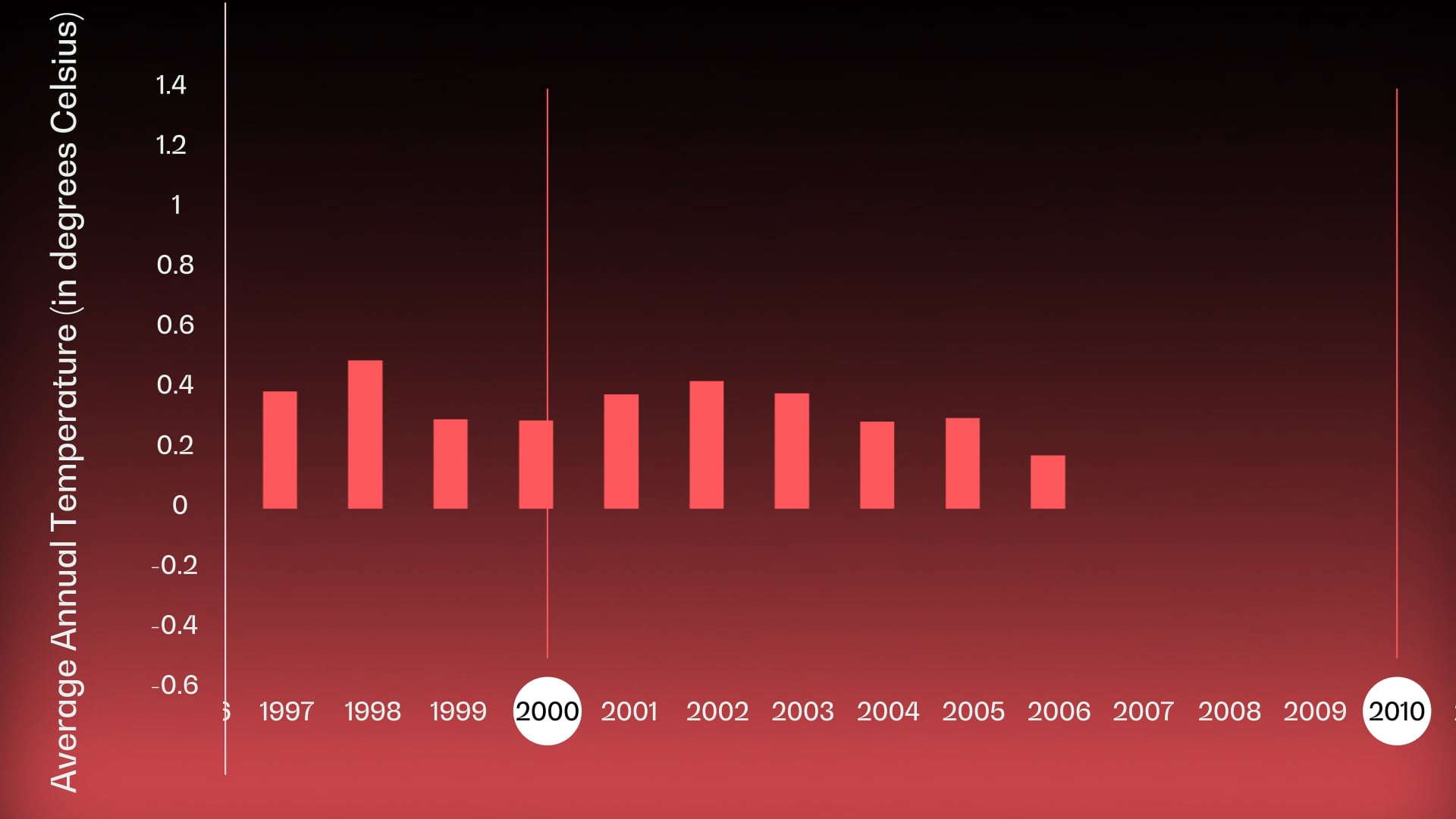
ROLE OF CARBON EMISSIONS
Why is our planet warming so rapidly? Short answer: Human activity. Fossil fuels, like coal, oil, and natural gas, are primarily used to generate energy for various purposes, including electricity production, transportation, and heating. Additionally, people need to convert land for housing and feeding growing populations.
All these activities and more release greenhouse gases into the atmosphere. These gases form a thick insulating layer around the Earth, trapping heat and driving temperatures higher. If you’ve ever stepped inside an actual greenhouse, with its heat-trapping glass walls, you may have experienced something similar to what’s happening on the surface of our planet.

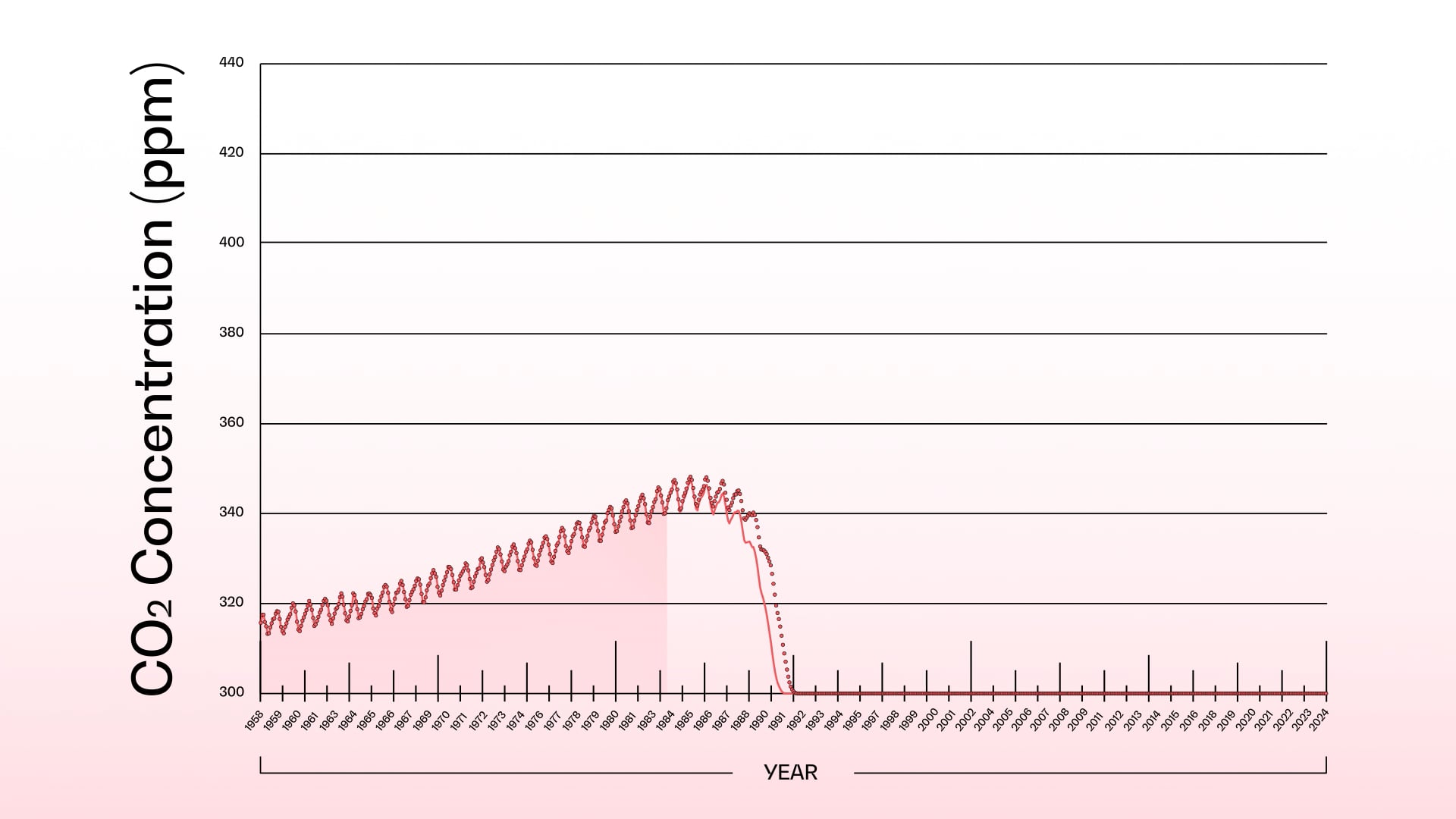
The main greenhouse gases that are causing climate change include carbon dioxide (CO2) and methane (CH4). CO2 also stays in the atmosphere for a long time, which means that its impact continues to increase as more of this gas is released into Earth’s climate system. Scientists have been measuring and tracking the rise in CO2 in the atmosphere every day since 1958. The data is impossible to ignore.

By examining ice core samples in places like Greenland and Antarctica, scientists have been able to look way back in time and confirm that today’s CO2 levels far exceed anything the Earth has experienced in the past 800,000 years.
The warming of our planet can’t be stopped immediately, but it can be slowed down and then reversed over time. How? Our best hope is to drastically reduce the amount of greenhouse gases we release into the atmosphere.
Along with Canada, many countries from all over the world have pledged their support for the United Nations’ net zero initiative, which is a cooperative effort to reduce carbon emissions to zero by the year 2050. To reach this ambitious goal many things must change, including how the world’s populations fuel their lives. Decarbonizing our economies and transforming how we create electricity can change our future for the better.

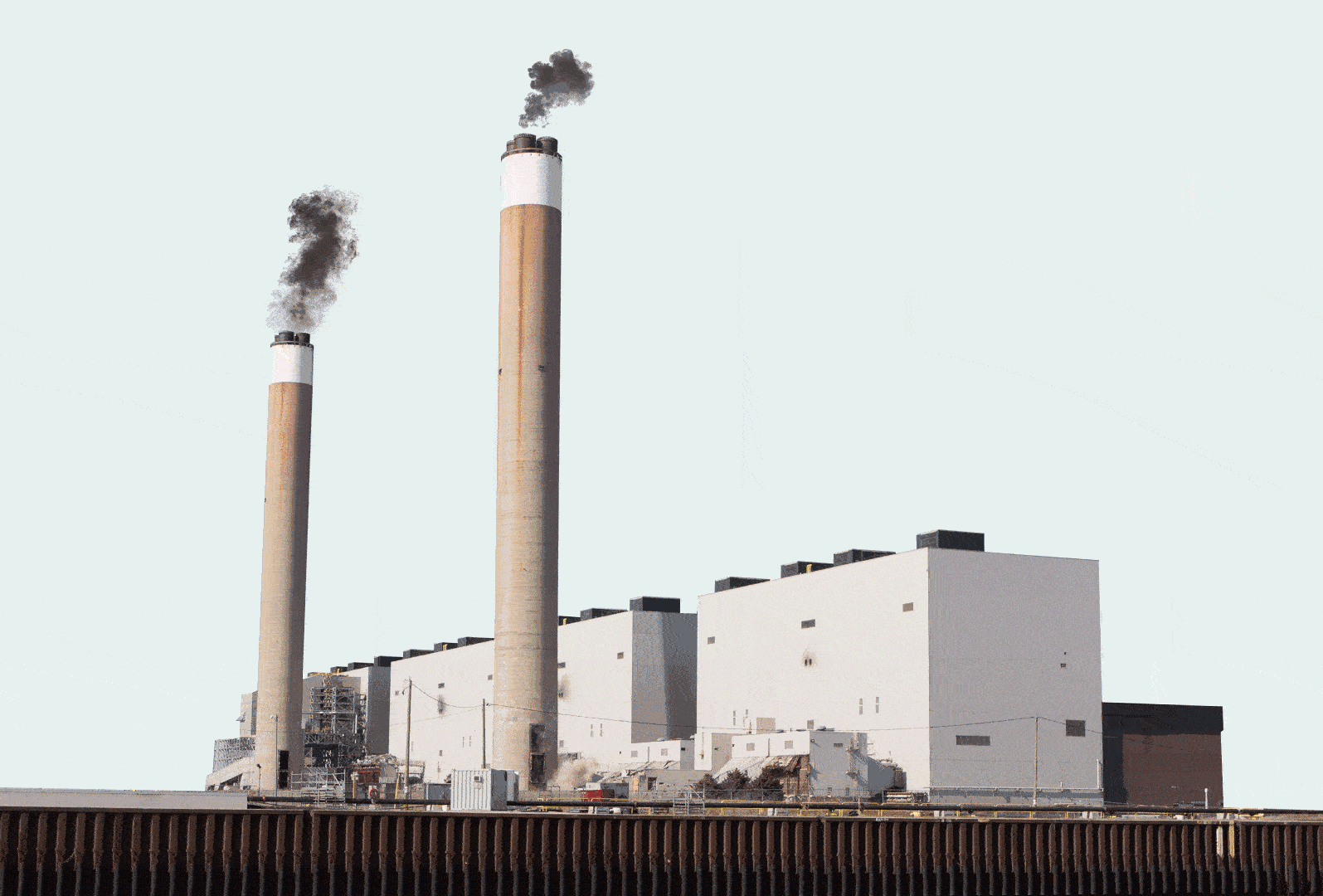
On the journey towards a more sustainable future, Ontario is helping lead the way with energy transformation solutions.
In 2014, OPG closed the last of its coal-fired generating stations. This was one of the world's single largest climate change specific actions. An impressive action—but that was then. What's next? How do we continue to lower carbon emissions on our way towards a net zero future, while also supplying a quickly growing population and their ever-evolving needs?
Decarbonization is a method of mitigating climate change by reducing or eliminating greenhouse gas emissions. Transitioning away from a dependence on greenhouse gas-emitting fossil fuel energy sources will help Ontario deliver a cleaner tomorrow.
How? By securing more supply of electricity generation from low-carbon sources such as nuclear, hydro, wind, and solar; by electrifying the transportation sector, industrial processes, commercial and residential heating; and by implementing conservation efforts to manage demand.
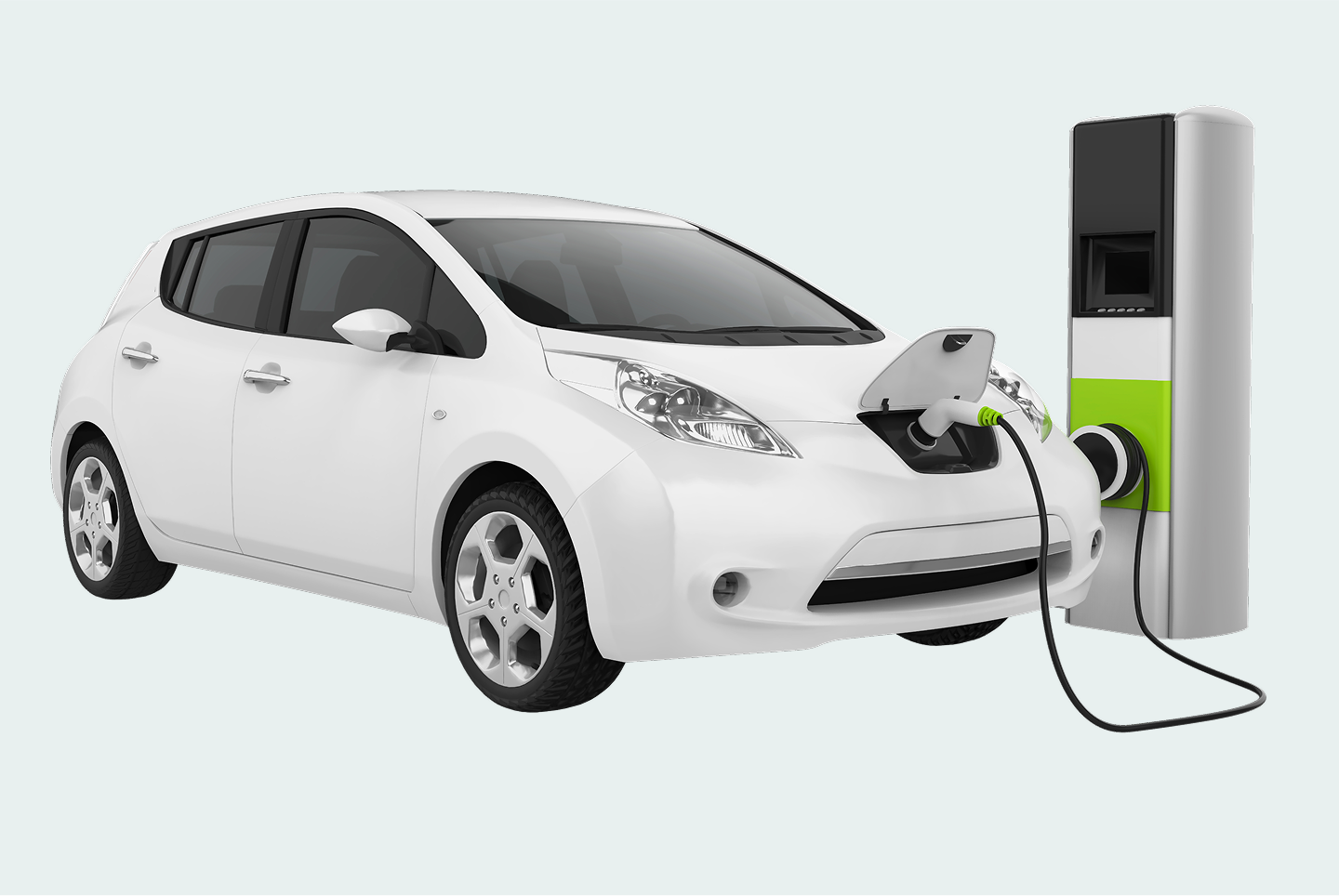
Electrification refers to the process of replacing technologies that use fossil fuels with technologies that use clean electricity as a source of energy. And it’s happening all around us.
When most Canadians think of the switch from fossil fuels to electricity, they usually think of cars. How can you not with the growing fleet of electric vehicles and charging systems across our province and country? There is also a broader shift towards clean electricity in the world of transportation. We are seeing more electric buses and delivery trucks on the roads, and that trend is likely to continue.
Industry is another massive contributor to carbon emissions. But that is also starting to change. The steel industry is just one of the many categories of manufacturing that are shifting over to electric power, with a number of companies turning away from blast furnaces towards electric arc furnaces to forge their products.
In the residential and commercial building sectors, electric heat pumps present an efficient solution to heat and cool our homes. Heat naturally flows from places with higher temperatures to locations with lower temperatures. A heat pump uses electrical energy to counter the natural flow of heat and pump the energy available in a colder place to a warmer one.


The electrification of the different sectors is a positive step forward, but it does create urgency to grow electricity generation. Ontario is boosting efforts to build new low-emitting supply like nuclear, hydro, wind, and solar.
Together, Darlington, Bruce, and Pickering Nuclear Generating Stations provide approximately 50% of Ontario’s electricity. Refurbishments of these plants will extend their life by another 30+ years. We’re also exploring new nuclear development at our Wesleyville site near Port Hope, with the potential to generate 8,000–10,000 MW— capable of delivering clean power to as many as eight to ten million homes. This project would create thousands of jobs and bring significant economic benefits to the local community.
Construction is underway for the first of four Small Modular Reactors (SMRs) at the Darlington nuclear site, the first in the G7. Together, these will provide a total of 1,200 MW of electricity generation which is enough to power approximately 1.2 million homes.
It is important to store energy to use when it is needed most. Energy storage can improve efficiency of intermittent renewable sources like wind and solar by allowing the energy produced when the sun shines and the winds blow to be stored and used when needed. Storage can greatly increase the efficiency of the grid by drawing energy from it during off-peak hours when demand is low, and by injecting that energy back into the grid when it is needed most. Ontario has secured nearly 3,000 MW of battery energy storage to support the grid, and is exploring the addition of other types of energy storage such as pumped hydroelectric storage, compressed air, and other alternatives.
Anyone who owns a phone knows that keeping it powered up is a balance of how often you charge it and how much power you use. If you’ve got loads of apps running, even though you’re not using them, you’ll need to charge much more often.
It’s the same thing with all the electricity we use. The less electricity we spend unnecessarily means the more electricity there is for others to share through the grid—reducing the need to generate and deliver more new energy.


Think about your own habits honestly. Conservation is all about the choices we make and the habits we break.
How often do you leave lights on or air conditioning running when you’re not at home? Could you raise the AC temperature a degree or two in the summer? How do you commute to work or school every day? What type of appliances are you using in your home? Do you consider using a small toaster oven instead of a conventional oven if possible? All our choices matter. Together, they add up to our individual carbon footprints.
To help us make informed choices, Ontario is implementing programs like the Green Button standard, which enable electricity users to have better access to their energy usage data so they can make decisions that will reduce their energy costs. The Province is also launching initiatives to help homeowners and businesses upgrade appliances and improve building insulation.